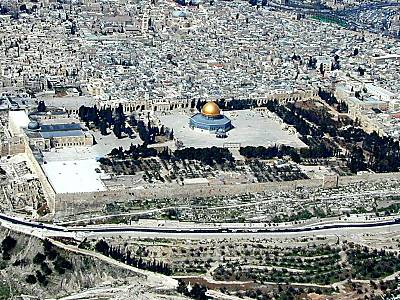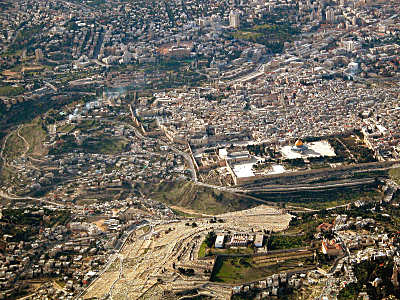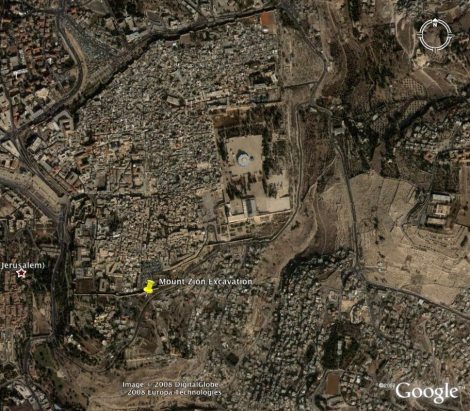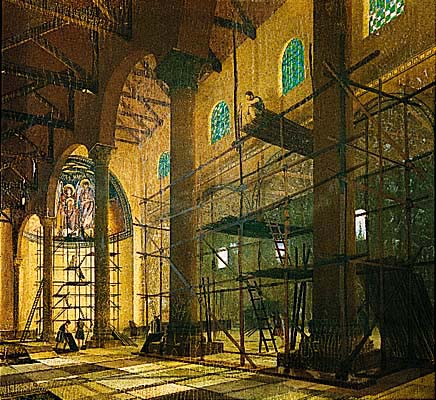Recently, LDS researcher John Pratt (along with V. Garth Norman, Lance Harding, and Jason Jones) wrote a piece for Meridian Magazine entitled “New Proposed Location for Solomon’s Temple” in which he claims to have discovered the original location of Solomon’s Temple (Israel’s first temple) on the Temple Mount in Jerusalem. My purpose in writing this post is not so much to analyze or necessarily discredit the work that Pratt has done, but to perhaps provide some alternative ideas regarding where the Temple may have been located. Specifically, I want to present the ideas of Margaret Barker on the topic, which differ quite significantly from the views of Pratt and others.
Pratt, et al., begin their article with a rather broad statement regarding current scholarly opinion about the location of Solomon’s Temple:
Exactly where was Solomon’s temple located? Virtually all investigators agree that it was on the Temple Mount Platform in Jerusalem, but its precise location has been in question.
The main initial reasoning for this conclusion is that “All tradition and evidence indicate that Solomon’s Temple was built at or near David’s Altar, atop the hill formerly known to Abraham as Mount Moriah.” The popular assumption, which Pratt accepts, is that the big slab of rock that is currently located inside the Muslim Dome of the Rock is the very same rock which both Abraham and David used as an altar.
Although I am quite certain that I heard a very similar theory on a trip to Israel in 1993, I commend Pratt for his dilligent research and desire to find a suitable location for a temple to be built on the Temple Mount platform without disturbing the Dome of the Rock. However, as I said, this post is not an in-depth analysis of Pratt’s findings. I am also not going to argue that Pratt did not find something significant. What I would suggest, however, is that we keep in mind that if there is any visible evidence of any ancient temple on top of the Temple Mount platform, it is much more likely to be remains of the Second Temple–more specifically, the Temple of Herod–and not the original Temple of Solomon.
The First Temple, which is what Pratt appears to be looking for evidence of, was destroyed in 587 BC. If the Second Temple was built in the same spot, any remains of the First Temple would have been levelled and built upon–I highly doubt that anything from the First Temple would be visible on top of the current Temple Mount platform. I am no archaeologist, but it seems to me that that is how these things usually work–newer structures are built on top of older structures, requiring archaeologists to dig down several layers of ruins to find the increasingly ancient structures.
 On this note I turn to the theory of Margaret Barker that “the site of the first temple was not the site of the second temple.” To get this theory from the source, you can listen to Barker give a brief overview of her thoughts during her interview with Dr. Bill Hamblin (Margaret Barker Interview – Part 7a–Location of the Temple). Also, she outlines these views in her recent book, The Hidden Tradition of the Kingdom of Heaven.
On this note I turn to the theory of Margaret Barker that “the site of the first temple was not the site of the second temple.” To get this theory from the source, you can listen to Barker give a brief overview of her thoughts during her interview with Dr. Bill Hamblin (Margaret Barker Interview – Part 7a–Location of the Temple). Also, she outlines these views in her recent book, The Hidden Tradition of the Kingdom of Heaven.
Basically, her theory is that Solomon’s Temple was built on Mount Zion, which is supposed to be to the southeast of the current Temple Mount, over the sacred Gihon spring. She also cites evidence from the Bible itself indicating that the Second Temple was to be built on a new site. She specifically cites Zechariah 4:6-9, which speaks of the rebuilding of the temple by Zerubbabel.
6 Then he answered and spake unto me, saying, This is the word of the Lord unto Zerubbabel, saying, Not by might, nor by power, but by my spirit, saith the Lord of hosts.
7 Who art thou, O great mountain? before Zerubbabel thou shalt become a plain: and he shall bring forth the headstone thereof with shoutings, crying, Grace, grace unto it.
8 Moreover the word of the Lord came unto me, saying,
9 The hands of Zerubbabel have laid the foundation of this house; his hands shall also finish it; and thou shalt know that the Lord of hosts hath sent me unto you.
Given this visionary statement regarding the site of the new temple, Barker reasons:
Now flattening a mountain top would not have been necessary had the new temple been on the original site…A new site is the most likely explanation for the words in Zechariah about the temple site, especially as Enoch remembers that the original temple was not on the temple mount, but on the hill to the south-east of it. “And from there I was taken to the center of the earth, and I saw a blessed place in which were trees–with branches alive and sprouting from a felled tree. And there I saw a holy mountain. Issuing out from beneath this mountain, from the east side, water flowed down towards the south” (1 Enoch 26:1-2). This stream must be the Gihon spring, which flows from the south-eastern hill, not from the present “Temple Mount” (Hidden Tradition, p. 11).
Although I have been there, I am no expert in the geography of Jerusalem. So, doing the best I can from this description, we can see on the aerial photo below that Barker’s proposed site for the first temple would be situated somewhat above and to the left of the raised Temple Mount (recognizable by the gold-domed Dome of the Rock).
Here is the site from another angle, with Mount Zion pin-pointed to the southeast of the current Temple Mount.
Just for fun, here is another image–looking south from the Mount of Olives.
According to Barker, in her interview with Dr. Hamblin, the location of the original Mount Zion has often been confused. To the south of the Temple Mount there are two hills. The original Mt. Zion is the eastern hill, but many early Christian pilgrims identified the western hill as Mt. Zion–a title that it holds to today.
Barker mentions that Christian Byzantine Emperor Justinian built his version of Ezekiel’s envisioned temple on the spot that he believed to be the location of Solomon’s Temple–Mount Zion. However, he didn’t realize that Mt. Zion had switched from the eastern hill to the western. So his church/temple, the Nea (or the New Church of St. Mary), was intended to be a restoration of Solomon’s Temple on the original site, but was built on the wrong Mt. Zion. He even had to construct a complex water system under the site in order to match Ezekiel’s description, whereas the original temple would have been built over the Gihon spring to the east.
The point, however, is that Justinian knew of the tradition that the original temple had been built on Mt. Zion and not the Temple Mount.
To me, this seems like a more likely theory than that of the Temple Mount theory. The more I read about the Second Temple, the more I come to believe that almost everything about it was different from the first. It would be very possible for it (and the Temple Mount with it) to have been built in a totally separate location chosen by Zerubbabel and the Zadokite priests.
















For the temple to be on Mt. Zion would certainly make it easier for temple to be rebuilt in Jerusalem. Too bad the temple wasn’t built on Mt. Scopus, that would greatly simplify the problem with BYU already being there.
Yeah, then the BYU campus could be turned into a temple and we would be all set. I’ve actually heard that suggestion a number of times! You never know…
We always speculated on the mission that this was a possibility. Our Mission President shot this down, saying it had to be built on the temple site. I don’t think he took into account your hypothesis that Solomon’s temple was on a different location. But then again, my mission pres. was David Galbraith who oversaw the construction and building of the Jerusalem Center and co-authored that book on Jerusalem, so we always assumed that it was wrong. I might shoot him an email to run this by him to see what he thinks.